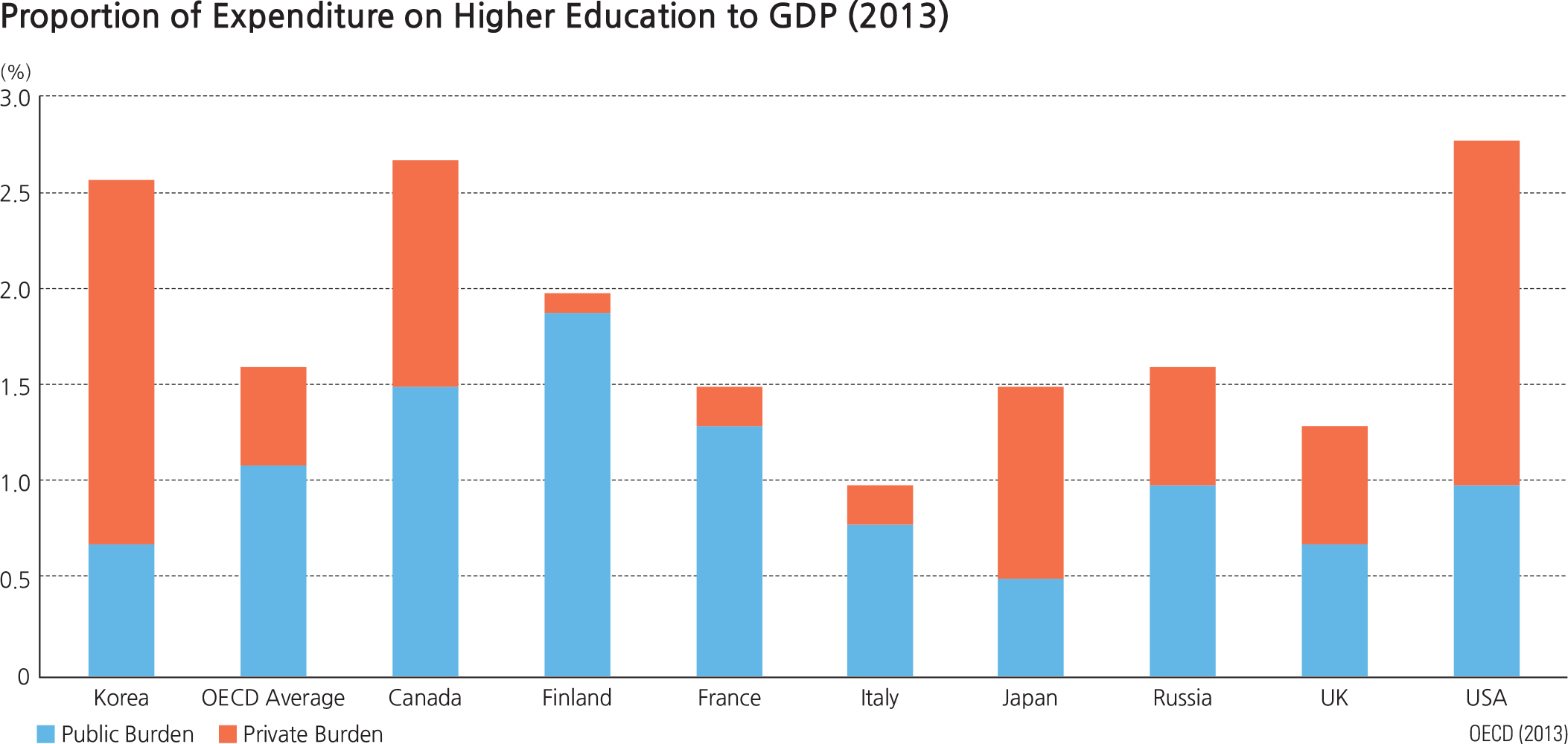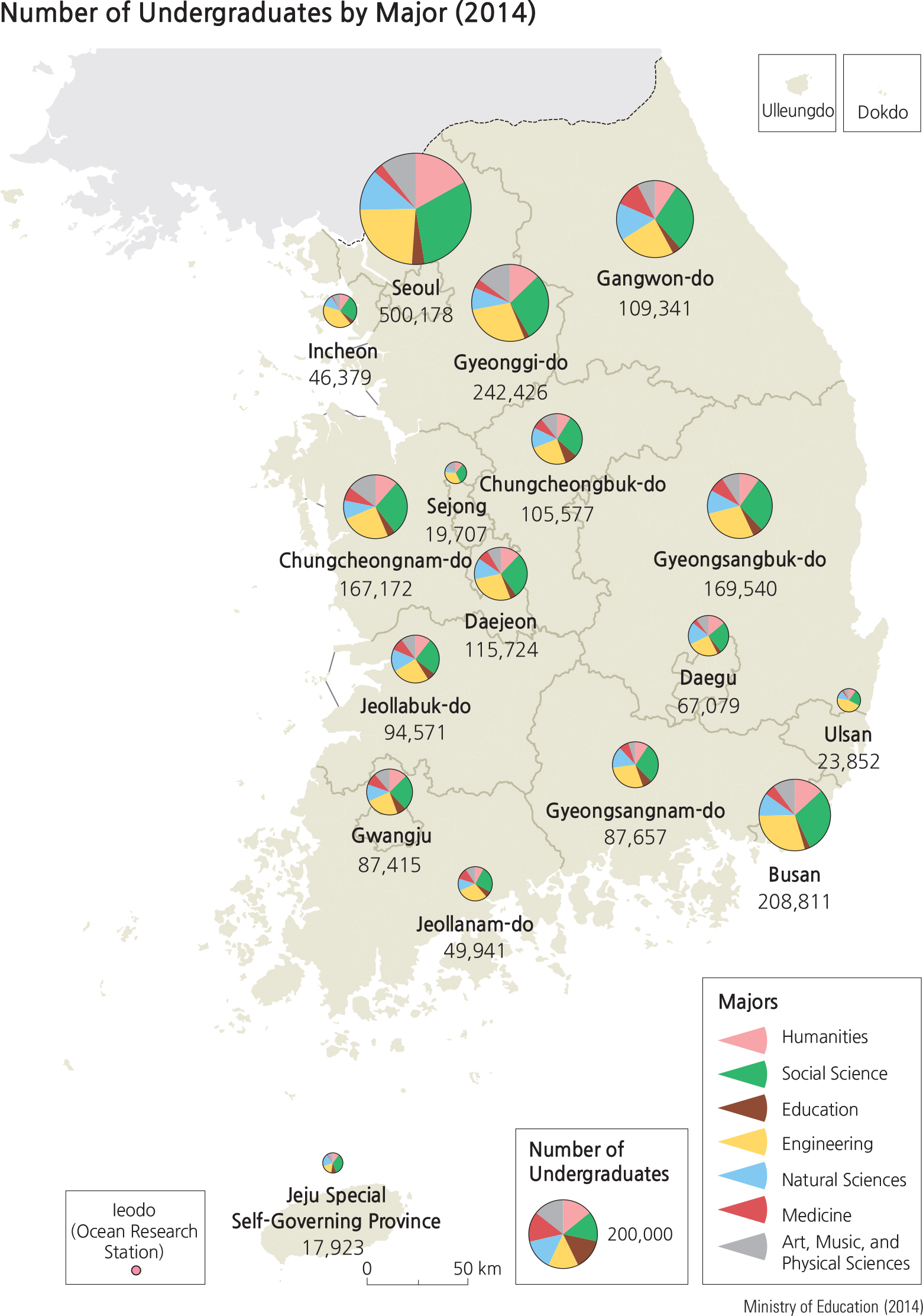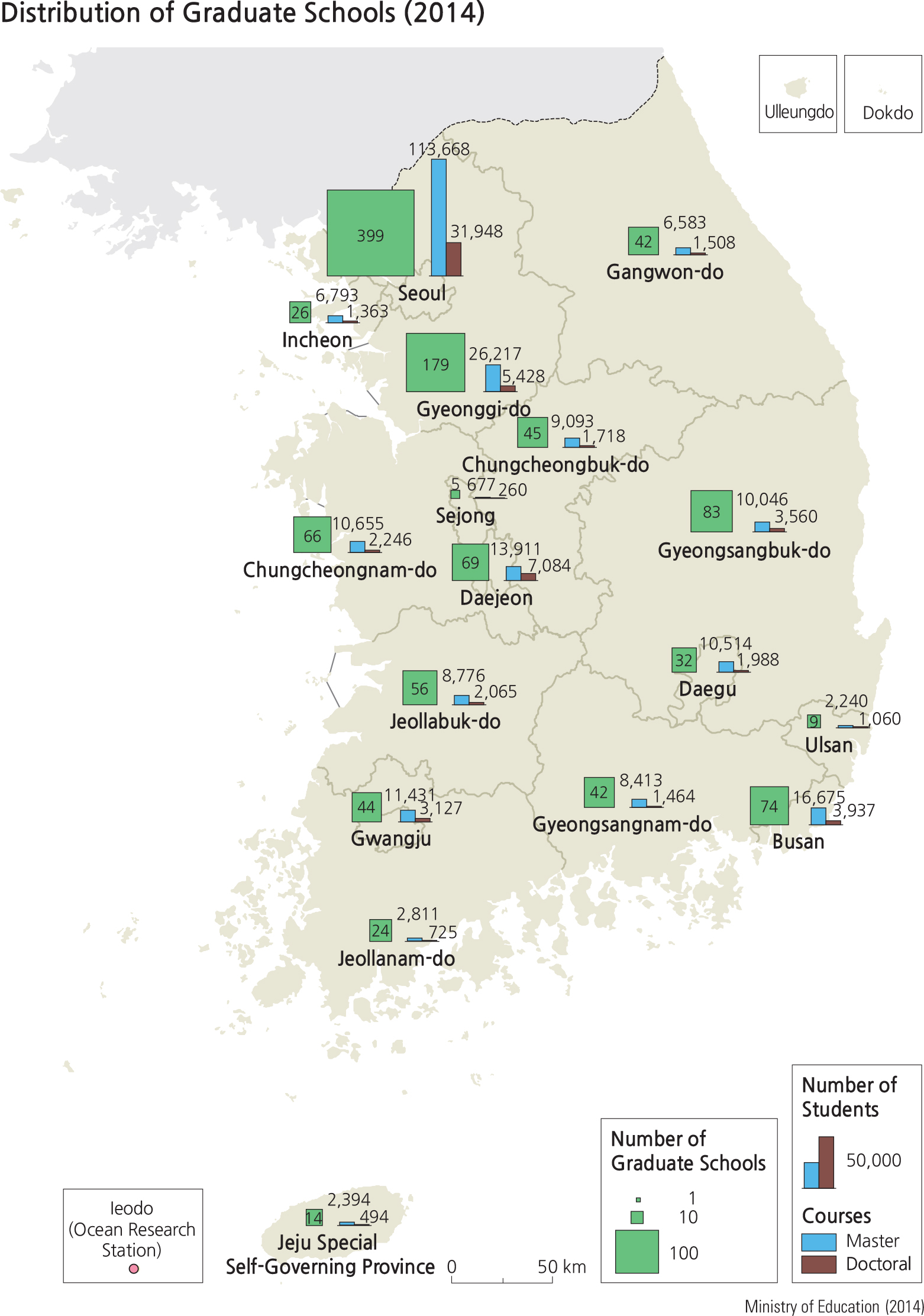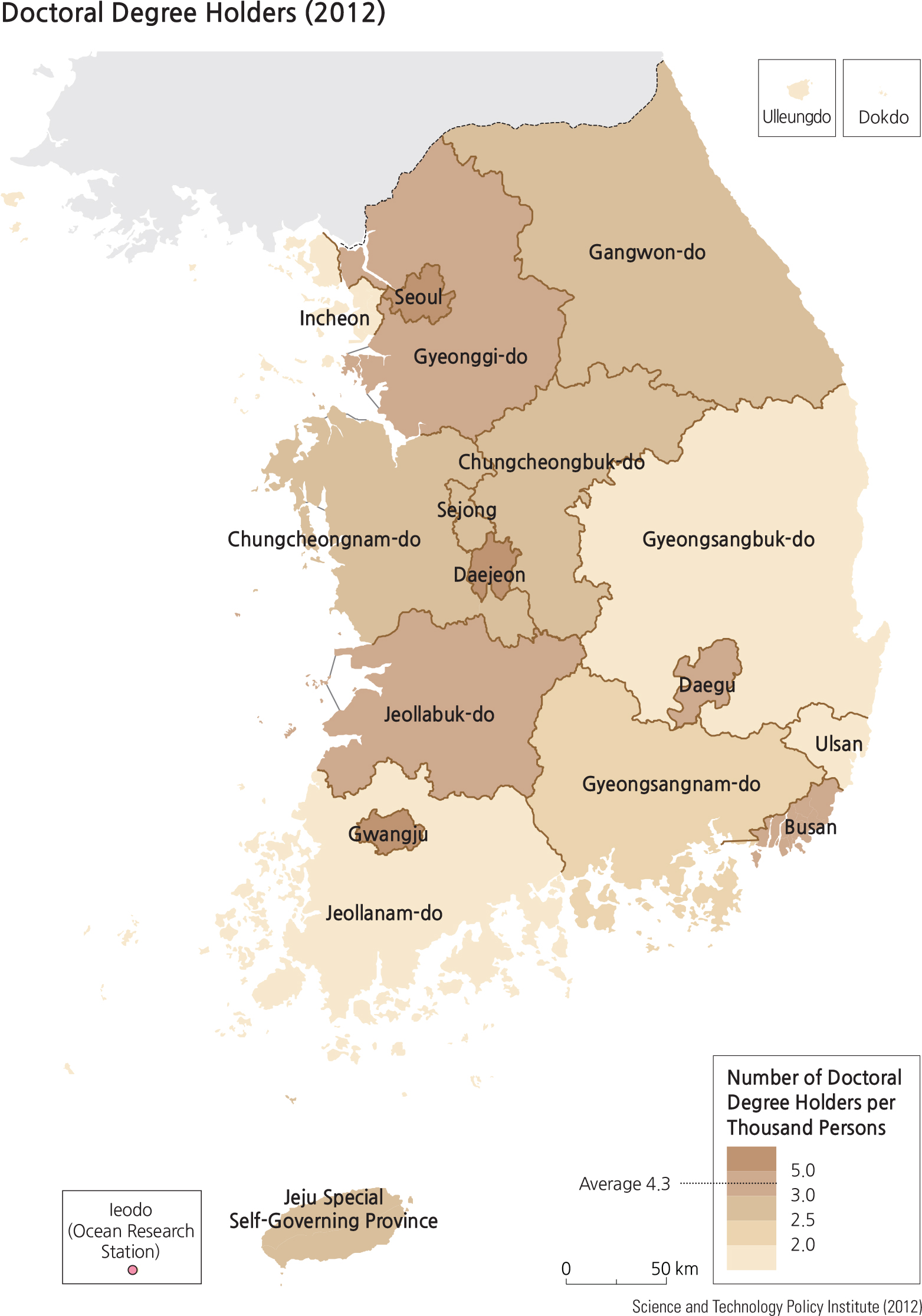Higher education in South Korea has undergone significant changes. The number of colleges and college enrollments has increased rapidly, and various types of colleges have been established. There are many types of colleges: four year universities; two-year colleges; teacher education colleges for training elementary school teachers; and universities that offer education through remote access. In addition, there are many specialized colleges such as military academies and academies that offer training for various professions.
Universities are classified into national and private universities; a few national universities were established in the central city of each province. Private universities have been established on the basis of unique educational goals. Since the 1990s, as the number of private universities has significantly increased, the percentage of students entering universities has also grown at a dramatic rate, to the point where the current percentage of students entering university in Korea is the highest among Organization for Economic Cooperation and Development (OECD) countries. The positive aspect of this phenomenon is the achievement of a highly educated workforce, but this also results in significant economic burden to the students. The appropriate level of college tuition, scholarship support by the state, and the maintenance of fiscal sustainability of both public and private universities have emerged as important agenda items in debates among politicians.
Majors in universities are largely classified under humanities, social sciences, education, natural sciences, engineering, medicine, arts, music, and physical sciences. Many graduate schools have been established in accordance with increasing demands for development of higher education and professional knowledge. While many graduate schools operated by universities account for a large share, there are many graduate schools for religious training, executive development, medical expertise training, and legal professional training.
University professors mostly have doctoral degrees; their doctoral degrees are obtained at both domestic universities and foreign countries, such as the United States, Japan, and Germany. In addition, many foreign students have recently entered Korean colleges and graduate schools to take Korean language courses and to obtain a degree due to the increased quality of higher education garnered by Korean universities internationally.
Brief Interpretation of the Maps
The 2015 Distribution of Colleges and Universities map is a color coded dot map with each dot showing a single institution of higher education. Blue dots represent
universities and red dot represents colleges. Beyond the classification by university and college, there is no further distinction between four-year colleges, two-year colleges, technical colleges, or teacher education colleges. The spatial pattern for universities correlates with metropolitan centers and urban areas of all sizes while colleges are located in both urban and rural areas. Many university students need to or choose to be away from home due to pursuing the most appropriate university programs that suit them best; some urban-based university students have the option of living at home while attending the university.
While it is not unexpected that university students may have to be away from home to attend college and given your understanding of where the Korean population is distributed, describe the distances they may have to travel to attend a university or college. While tuition costs, living expenses, and availability of scholarships and financial supports may enter into a student’ decision on where to attend higher education, what are your own personal thoughts on all these factors? How would you prioritize them?





